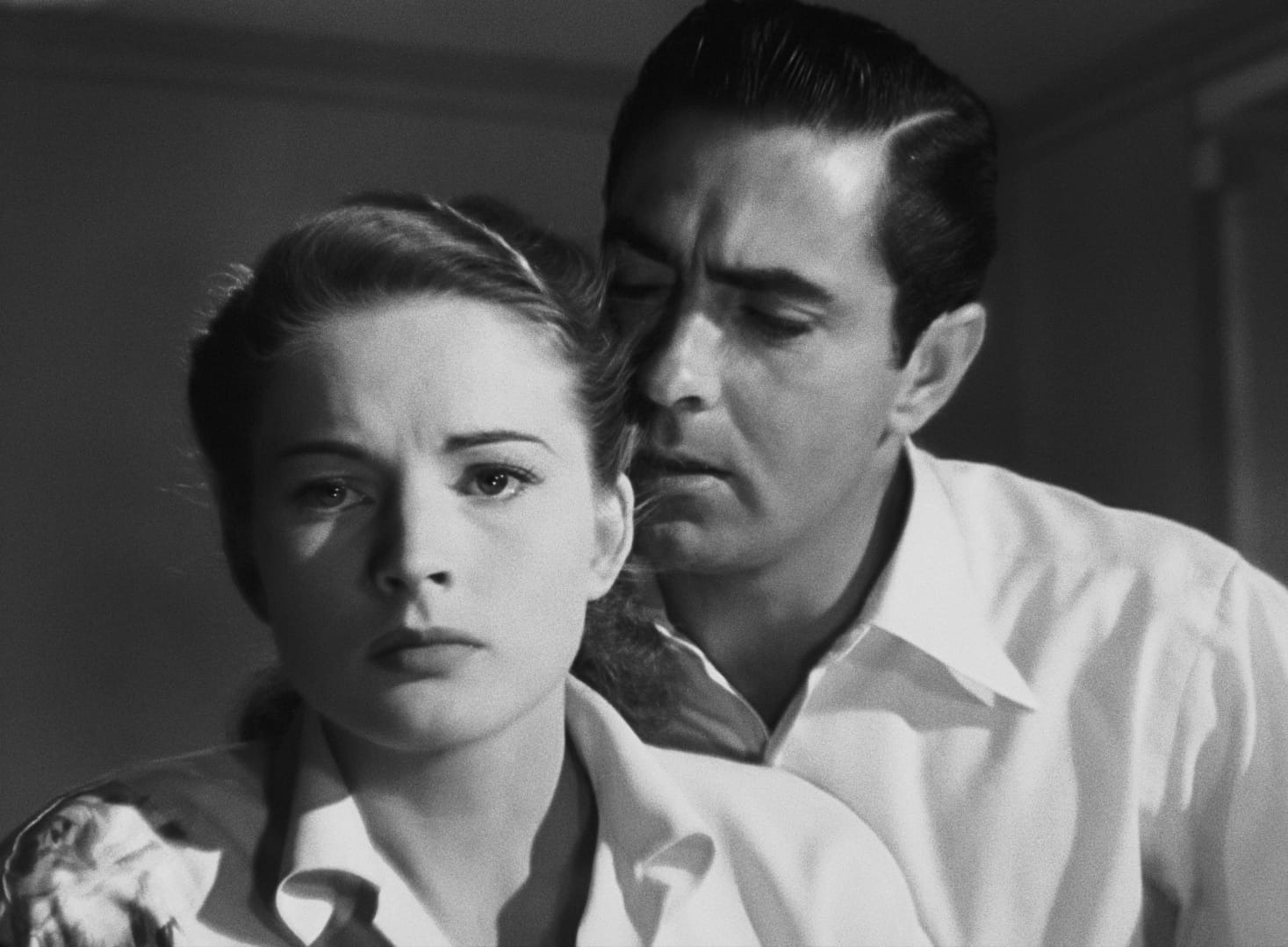RELATED ARTICLE
10 Things I Learned: Nightmare Alley
By Jason Altman
The Criterion Collection

Stanton Carlisle is walking on a precipice. You could call him a seeker—but he’s a seeker with one eye open and one eye shut. He’s also a heel, a cheat, a selfish son of a bitch. And he knows it: “I wonder why I’m like that,” he muses at one point. He then admits: “I'm never thinking about anybody—except myself.”
Stanton is disarming. He’s got to be charming, seductive—it’s his stock-in-trade. And that charm helps keep his own tangled self from falling off the cliff—for now. Because there’s something brewing in Stan. From the start, he seems haunted, drawn to the abyss, gripped by it, even. Immediately, we see that enthrallment. He’s moving through the crowded carnival he works at and stops to take in a horrifying presentation—the geek. He turns away, right as the “half man, half beast” is about to accomplish what the spectators have been waiting for. He looks back for a moment when he hears the despairing shrieks of the man—not a beast but a man. The geek is a tragic down-and-outer, an alcoholic or drug addict tricked into this nightmarish job, biting the heads off chickens, and now sticking to it to get his daily allotment of sweet poison.
Stan’s carnival boss asks him why he’s watching his appalling draw. Stan says: “Geek guy fascinates me.”
This fascination is the world that director Edmund Goulding plunges the viewer into in his 1947 Nightmare Alley, a world where seemingly pleasant, God-fearing folk gawk at a geek for purposes of “science and education,” and members of sophisticated high society fall for a phony spiritualist’s claims to be able to contact their dead. It’s a grim but recognizable look at human nature—how people prey on others with their deceptions and how we often wind up deceiving ourselves, sometimes out of greed, sometimes in our attempts at self-illumination, sometimes to run away and lose ourselves. For Stanton Carlisle, played by a magnificent Tyrone Power, all of this is true.
Nightmare Alley is much like Stanton, coarse and yet elegant; it is an A picture with the gritty, pounding heart of a B. A film noir, but not entirely classifiable as such, it seemed destined to become a cult oddity, even if Twentieth Century-Fox likely wanted to make at least some money from it. It wasn’t a moneymaker—nowhere near. But then, upon its release, the studio never gave it a chance.
Within its carnival milieu, Nightmare Alley is a dark, sometimes feverish look at American striving—specifically in the character of Stanton. The carnies surrounding him aren’t buying into the American dream—they know how rigged the world is, and they’ll entertain folks or fleece them with a ring toss or a mind reading. The movie offers a complicated set of feelings about all these characters and their differing types of trickery. They can put on a show and amaze an audience—like beautiful Electra, with sparkling currents passing through her. But then there’s the geek—subjugated by the most ruthless of carnies—and even he’ll know when he’s being tricked, poor soul. Within all this, there’s a spiritual dimension at play—a tale of fate versus the consequence of choice. Carl Jung said: “Until you make the unconscious conscious, it will direct your life and you will call it fate.” You feel the tension of that maxim vibrating throughout the movie.



